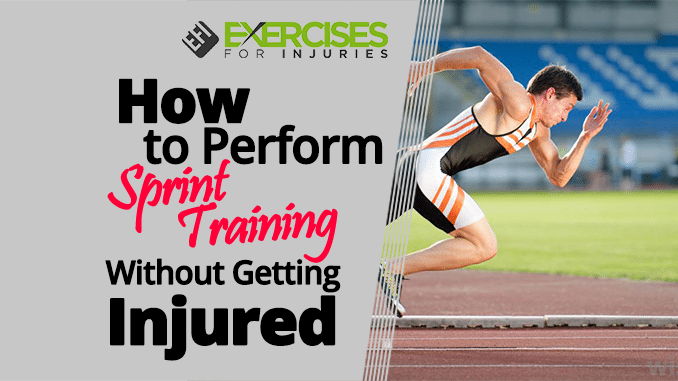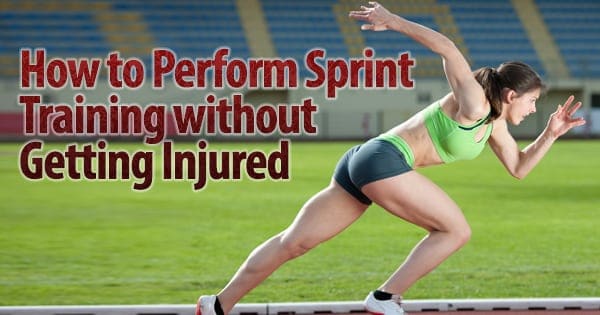
Today, I am in Burnaby and I’ve met up with Niall, he is from Toronto and we got to chatting about sprinting. He is a big believer in sprinting. But when you and I think about sprinting, if we are not super mobile or if we have injury, we kind of avoid it.
But Niall really believes that there are ways that you can tweak sprinting, so you can continue sprinting in order to get a cardiovascular workout, in order to help with your fat loss workout without irritating your injury or making your injury worse or getting injured.
I will get Niall first to introduce himself and talk about how you can keep sprinting and getting results without getting injured.
CLICK HERE to watch the YouTube video.
Niall Traynor: I am from HowDoIGetGreatLegs.com. Part of what we do is Strength Training and part is Speed Training because our belief is you want to look fit, you want to look strong, and you want to look fast.
For example if you look at the track athletes, they have that ideal body.
But to your point, a lot of people when we say “sprints” they get intimidated and they think about getting injured but a lot of people don’t really understand how track athletes or any athlete does proper sprinting practice.
We were just talking about sprint drills for example the “A” is almost like running in place. Every sprint drill, they might be anywhere from 10 to 20 core sprint drills, there is a marching version which absolutely anyone can do. That is walking with high knees. There is the skipping version, so maybe you haven’t skipped a lot that something you can work on here. But if you just practice skipping, within a couple of months you can transfer all those marching drills to skipping drills.
And then lastly, there is this running version. But the running version isn’t running, it’s not sprinting. It’s almost like running in place and then you slowly glide over short distances. Most sprint drills are done in 10 to 20 meters, so very short distances. But what these things do is they “train your central nervous system” to have the form to be able to run well, to be able to sprint well.
Part of the problem of getting injured is if you haven’t run since you were a teenager or in your 20’s or whenever you stop, doing that really explosive running, your body has essentially forgotten how to do it and all these little muscles outside of the big muscles aren’t strong enough to do it.
I see it with my friends who are weekend warriors, like they haven’t done anything all winter and they play softball and they tear their hamstrings. These sprint drills train your body to be ready to sprint. Then ultimately when you do start sprinting, let’s say you’ve been doing the drills, the running version for a couple of months, you are ready to sprint, we tell you not to sprint to the 100% for another 2 months. You might be sprinting 50% to 70% of your max and again over a very short distance about 20 to 30 meters because you are not strong enough to run 100 meters with good form and with all our exercises “form” is paramount.
But if you are in your 30’s, 40’s, 50’s, 60’s even and you haven’t been sprinting in ages, to be able to return to that, that’s the ultimate mobility to be able to sprint. You can do it, you just have to know how.
Rick Kaselj: Then looking at the 3 different variations that you talked about, another reason why I like them is it takes the joints to nearly full range of motion when looking at the foot, ankle, knee, and the hip. Plus they end up being low impact which anyone can do.
They tend to be unilateral, so you end up being on one leg so you are working on your hip stability and your knee stability which are all really good things. And you also work on that toe off which is so important as well. There are a lot of excellent reasons to try that alphabet or the “ABC”.
Niall Traynor: There’s a whole bunch of them.
Rick Kaselj: Yes, and the marching and that running with that sprinting with high knees. (click here to see the three sprint drills we keep referring to.)
Niall Traynor: I mean even if you didn’t go back to full on sprinting, if you are to do sprint drills as a warm up to some bodyweight exercises or before you go for some jog, they teach you great form and they give you that mobility and they build all the muscles in your body.
If you look at sprinters, they have awesome physiques. And if you look at the sprinters workout, they probably on a given day for sprinting they probably only do about 15 minutes of work but they take long breaks so they are very fresh in sprint. You can do 10 minutes warm up of sprint drills and then go to any routine and you are doing yourself huge favors in terms of mobility.
Rick Kaselj: Awesome. Niall, where can people get more information about you?
Niall Traynor: Head over to HowDoIGetGreatLegs.com and take a look at what we have to offer. We definitely want to get the whole world sprinting. We are going to make the planet fast.
Rick Kaselj: Exactly. Thank you very much for watching. This is Rick Kaselj from ExercisesforInjuries.com. Make sure you swing by ExercisesforInjuries.com, enter in your injury or pain, there’s a good chance that I have an article, a video, or an interview for you that will help you with your pain.
Secondly, if you are watching this on YouTube, head up above and hit subscribe. What that will do is every couple of days you will end up getting a video like this or an interview with someone like Niall, or I talk about injury or pain, or I have a guest video from one of my friends in the health and fitness world.
Lastly, make sure to head down below hit LIKE and leave us a question or a comment for Niall or for myself. This is Rick Kaselj and Niall coming to you from Burnaby British Columbia Canada saying take care and bye bye.
If you are interested in getting the best looking legs of your life, then check out How to Get Great Legs, here:


